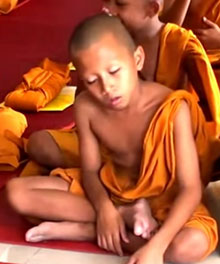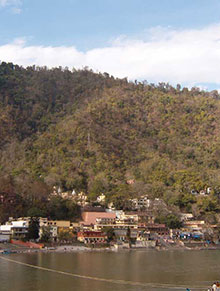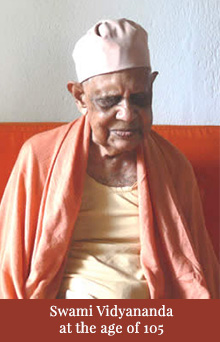 To an Indian Christian friend who asked about experiencing blankness and spontaneous bodily movements in meditation.
To an Indian Christian friend who asked about experiencing blankness and spontaneous bodily movements in meditation.
I am very happy that you are meditating regularly. This is so very important. It is also good that you are meditating longer.
Sleepiness
It does happen sometimes that the meditator gets into a kind of blank or tamasic state in meditation, and may even pass into dreamless sleep without realizing it. This is because the mind is used to going into the sleep state when the mind becomes still and relaxed. In time this problem goes away. But be sure you are getting enough sleep at night.
How to deal with bodily movements
Bodily movements and tremors do occur to some yogis in the beginning. When it happens, stand up for a few moments and then sit back down. Sometimes these things occur because the meditator has habitually been living with some muscles tensed, and now they are beginning to relax and cause such movements. It is good to take a deep breath and let out all tension occasionally. It is important to not let such movements take over, but stop them immediately. There are so many sources for these problems that it is impossible to determine them.
There are many people who sway back and forth or side to side and claim subtle pranic forces are causing this. Really it is their restless minds seeking some distraction and activity. (I am not saying this is your situation, but it is good to know, especially if in the future you meet such people.)
The yogi must always be in charge of body and mind. That is easier said than done, but can be done.
Learning from those with experience
 Again I recommend you visit Sivanandashram and stay for two or three days or longer. There you will find people who have many years’ experience in meditation and can be very helpful. (Not everyone, though. Even in ashrams you can find ignorant people.)
Again I recommend you visit Sivanandashram and stay for two or three days or longer. There you will find people who have many years’ experience in meditation and can be very helpful. (Not everyone, though. Even in ashrams you can find ignorant people.)
Meditation pointers
Certainly meditation should be preceded by prayer, and at the end the meditation should be offered to God.
Both the breath and the intonations of Om become very subtle, but should never be lost or allowed to stop. If that happens, take a few deep breaths and start over as usual.
There is no need to concentrate between the eyebrows. During meditation awareness of different areas of the body and head can arise, but they should not catch your attention. Just keep on with breath-and-sound awareness. Distractions that are ignored will eventually go away.
Facts about Samadhi
There is a lot of mythology about samadhi. Samadhi is when the awareness is totally absorbed in the Self. Physical manifestations are not essential. Some people think the breath and heartbeat should stop, but this is foolish. Every time we die the breath and heartbeat stop, and we do not pass into spiritual consciousness. Sometimes people who have intense trauma undergo breathlessness and suspension of the heart, but do not gain in spiritual consciousness. Nevertheless this does occur to some yogis.
 My sannyasa guru, Swami Vidyananda Giri, daily went into the breathless state during meditation. Whether his heart stopped I do not know. Certainly it happens to some. A friend of mine witnessed Paramhansa Yogananda enter a state of complete suspension of breath and heartbeat. When it is spontaneous and not just yogic control, it is a true spiritual state.
My sannyasa guru, Swami Vidyananda Giri, daily went into the breathless state during meditation. Whether his heart stopped I do not know. Certainly it happens to some. A friend of mine witnessed Paramhansa Yogananda enter a state of complete suspension of breath and heartbeat. When it is spontaneous and not just yogic control, it is a true spiritual state.
The essence of it all
Just fix your mind on God through the japa and meditation of Om. As Patanjali says, that is the way. And as Jesus said, we need to keep our lamps of inner awareness trimmed and burning, possessing our souls in patience.
It is in meditation that we come to know “the God who commanded light to shine out of darkness, who has shone in our hearts to give the light of the knowledge of the glory of God in the face of Jesus Christ” (II Corinthians 4:6).
Further reading:
- 4 Questions on Meditation
- 15 Tips on Spiritual Practice from a Remarkable Saint
- 9 Obstacles to Yoga Meditation You Need to Overcome







